Using a paintbrush
Using a paintbrush correctly is the key to achieving the best paint finish. Never use cheap brushes and ideally have a good size selection in your toolbox. Even though you can now use rollers or paint pads, you will always need brushes for cutting in around edges and for the more detailed work. With wood, brushes are still by far the best option for giving a good finish. The main differences when using a brush is dependent on whether the paint you are using is oil-based (solvent-based) or water-based (acrylic). Water-based paint is designed for wall and ceiling surfaces – it is normally called emulsion. Oil-based paint is most commonly used on woodwork. Below shows the best techniques for using a paintbrush with both oil, and water-based paints.
Water-based paints
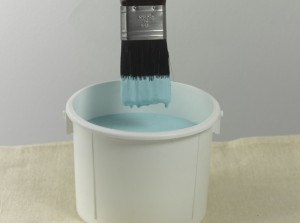 |
1. For emulsions and other water-based paints, dip the brush in to one third bristle length. Remove excess on the side. |
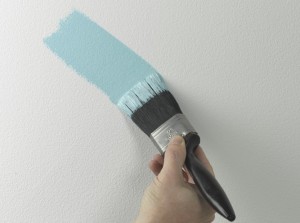 |
2. Apply paint to the wall in broad, random strokes. Do not brush the paint out, but do make sure it is an even coverage. |
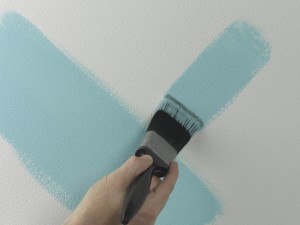 |
3. Apply the paint in random directions overlapping each area onto the previous one. |
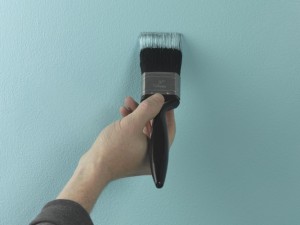 |
4. After completing a small area as shown here, without reloading the brush, ‘lay off’ the paint by gently brushing over the surface, to disperse any brush marks in the paint. Just let the tips of the bristles run gently over the surface. Then reload the brush, and move on to the next area. |
Oil-based paints
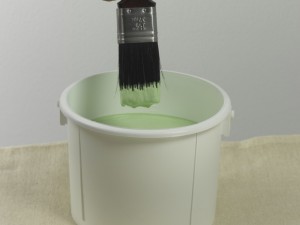 |
1. For oil-based paints, dip the brush into one quarter bristle length. Remove excess on the side. |
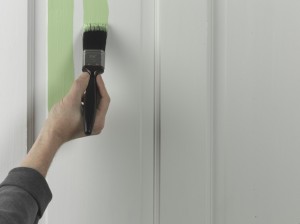 |
2. Apply the paint in small strokes in one direction. Paint two or three bands of colour for large open surfaces like those on panel doors. |
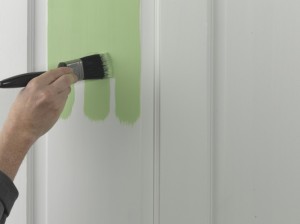 |
3. Without reloading the brush, spread the paint in the opposite direction, brushing it out evenly. |
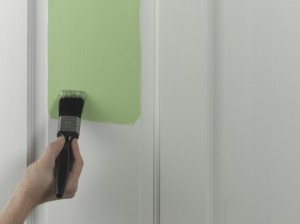 |
4. Finally ‘lay off’ using the extreme tips of the bristles to even out the finish. Reload the brush and move on to the next area. |
Painting tips
- Water-based paint is washed out of brushes with water. If you use a little washing up liquid, it will speed up cleaning as well as leave the bristles nice and soft for the next time you use the brush.
- Most oil-based paints must be cleaned out of brushes using white spirit or a proprietary brush cleaner.
- If you stop for a break whilst painting, you can wrap the brush in cling film to stop it drying out. You can even leave a brush overnight using this technique.
- Always make sure that paint is stirred thoroughly before use (unless otherwise stated on the can), and always decant paint into a paint ‘kettle’ as shown above.
- For more information about brushes, please check out my ‘Brush buying guide’.
- It is worth noting that oil based paints are gradually being used less and less. This is because legislation (in most countries) has been introduced to reduce the VOC levels (the nasty stuff) in paint, which specifically affects the formulation of oil based paints. As a result, more and more DIY enthusiasts and professionals alike, have begun using more water-based paints for painting wood, whereas in the past, it was nearly always the case that oil based paint was used. Personally, I still try to use mainly oil based paints on wood, because I think the finish is superior and still more hardwearing than the latest water-based paints for wood. For much more information on this subject, see my guide – ‘Which paint for wood?’
